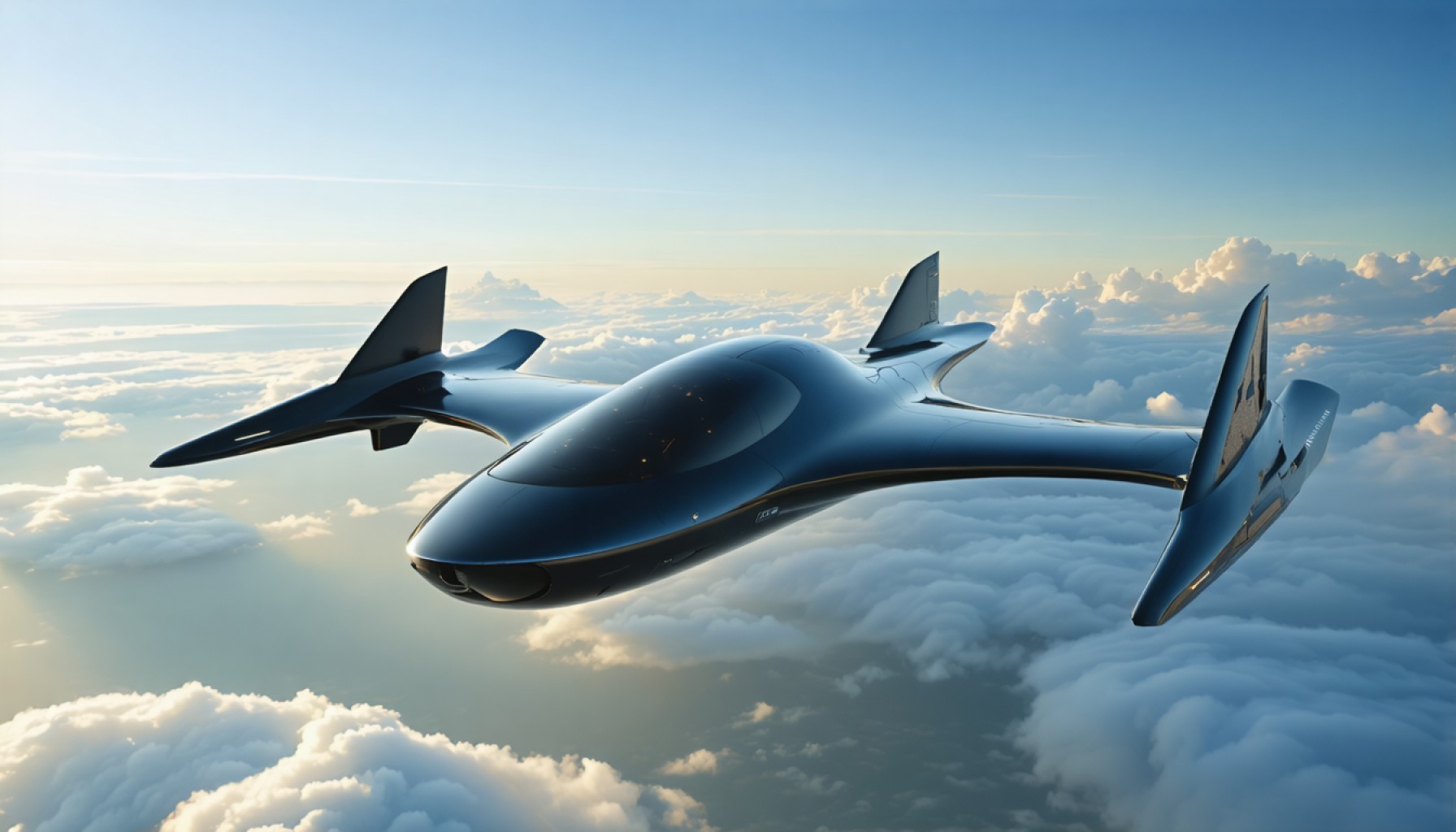- XPeng is pioneering the creation of flying cars through its aviation subsidiary, AeroHT, with the development of the “Land Aircraft Carrier,” a hybrid road and air vehicle.
- The vehicle features a sleek electric car on the ground and a discreet foldable eVOLT module, offering both scenic sightseeing and rescue capabilities.
- XPeng’s flying car has 3,000 pre-orders, with plans for mass production by 2026, indicating the potential for airborne commuting to surpass traditional EVs.
- In addition to aviation, XPeng is investing in robotics for manufacturing automation and is expanding into global markets, challenging industry leaders.
- XPeng’s EV sales have surged by 331% in the first quarter of this year, demonstrating its momentum and growth in the transportation industry.
- XPeng’s advancements hint at a possible paradigm shift in urban commuting, as they continue to pursue innovative transportation solutions.
Imagine gliding silently over rush hour traffic in a vehicle that easily transitions from road to sky with the push of a button. This tantalizing vision of the future is not just a figment of sci-fi imagination—it’s the audacious reality being crafted by XPeng, a bold pioneer in the tech world. Known for carving out a reputable space in China’s electric vehicle market, the company now sets its sights on conquering the sky.
In 2021, XPeng’s aviation subsidiary, AeroHT, embarked on an ambitious journey: the creation of a viable flying car. The fruits of their labor surfaced last year with the unveiling of the “Land Aircraft Carrier,” a double-module flying vehicle that dazzles with futuristic allure. The ground component is a sleek, six-wheeled electric vehicle, while the air module, discreetly tucked away, unfurls into an eVOLT (Electric Vertical Take-Off and Landing Aircraft) in under five minutes. This avant-garde contraption is lightweight, foldable, and boasts a 270-degree panoramic cockpit, providing the dual charm of scenic sightseeing and the practicality of rescue missions.
XPeng’s audacious strides first captured imaginations at CES, the colossal international electronics showcase, and the intrigue hasn’t waned since. Last week, the company completed another successful test flight, drawing closer to the dream of widespread airborne commuting. This revolutionary vehicle has already amassed 3,000 pre-orders, promising mass production in 2026, as XPeng stakes a bold claim that flying cars might soon outpace traditional EVs.
But XPeng’s innovation doesn’t stop with the skies. The company is further broadening its horizons, investing heavily in robotics to automate their manufacturing processes with humanoid robots. As they gear up to challenge Tesla’s dominance, they’re also eyeing expansion into the Southeast Asian, European, and Latin American markets. A recent report reveals a staggering 331% increase in XPeng’s EV sales from this year’s first quarter, a testament to their relentless momentum.
While the future might still hold questions—such as whether the concept of flying cars will achieve mainstream adoption—XPeng is unfazed, soaring ahead with their vision. Their fervent pursuit of the sky road suggests a paradigm shift that could redefine urban commuting as we know it. As we near the possibility of airborne travel becoming commonplace, XPeng’s daring leap embodies an evolving world teetering on the brink of the extraordinary.
The Future of Mobility: XPeng’s Flying Car Revolution
In-Depth Exploration of XPeng’s Flying Car Ambitions
XPeng, a trailblazer in electric vehicles, is crafting a new frontier with its flying car project, spearheaded by its aviation division, AeroHT. While the concept of flying cars has long tantalized imaginations, XPeng is turning fiction into reality, aiming to integrate airborne vehicles into everyday commuting.
Key Features and Specifications
1. Dual-Module Design: The “Land Aircraft Carrier” design consists of a sleek electric vehicle with a hidden module that transforms into an eVOLT (Electric Vertical Take-Off and Landing Aircraft).
2. Quick Transition: The seamless transformation from road vehicle to airborne transport occurs in under five minutes, offering unparalleled convenience in urban mobility.
3. Panoramic Cockpit: The 270-degree view cockpit ensures both safety and an immersive experience, equally effective for sightseeing and urgent rescue missions.
4. Mass Production Goals: With over 3,000 pre-orders, XPeng plans to commence mass production by 2026, illustrating substantial consumer interest and anticipation in the market.
Emerging Trends and Market Forecasts
– Global Expansion: XPeng is actively expanding into Southeast Asian, European, and Latin American markets to capitalize on growing demand for innovative transport solutions. The company targets regions with dense urban populations where traditional commuting faces significant challenges.
– Sales Surge: The 331% increase in XPeng’s EV sales in the first quarter of the year underscores their growth trajectory and brand strength, hinting at robust potential for their aviation ventures.
Controversies and Limitations
1. Regulatory Hurdles: The path to mainstream adoption involves significant regulatory challenges, including air traffic control integration and urban zoning adjustments for take-off and landing.
2. Public Skepticism: While XPeng is confident in their technology, public acceptance of flying cars hinges on safety assurances and reliable performance demonstrations.
Pros & Cons Overview
Pros:
– Reduces road congestion.
– Revolutionizes urban transport with efficient routing.
– Pioneering technology in personal air travel.
Cons:
– High initial cost of ownership.
– Regulatory and infrastructure challenges.
– Skepticism regarding safety standards.
Security & Sustainability
– Safety Measures: XPeng prioritizes incorporating advanced safety features, including redundancies in flight control systems and emergency landing protocols.
– Environmental Impact: As an electric vehicle, the flying car aligns with sustainability goals, reducing reliance on fossil fuels and minimizing emissions.
Actionable Insights and Recommendations
– Stay Informed: Keep updated on regulatory developments affecting flying car deployment in your area.
– Be Prepared: If you’re considering a flying car, begin understanding the potential changes in commute patterns and urban living.
– Explore Investor Opportunities: With XPeng’s rapid growth, there may be potential investment opportunities in their technologies.
For more insights into transformative technologies like XPeng’s innovations, explore the resources at XPeng Official Site. Stay ahead of the curve with updates on flying car developments and market trends.
